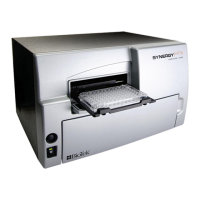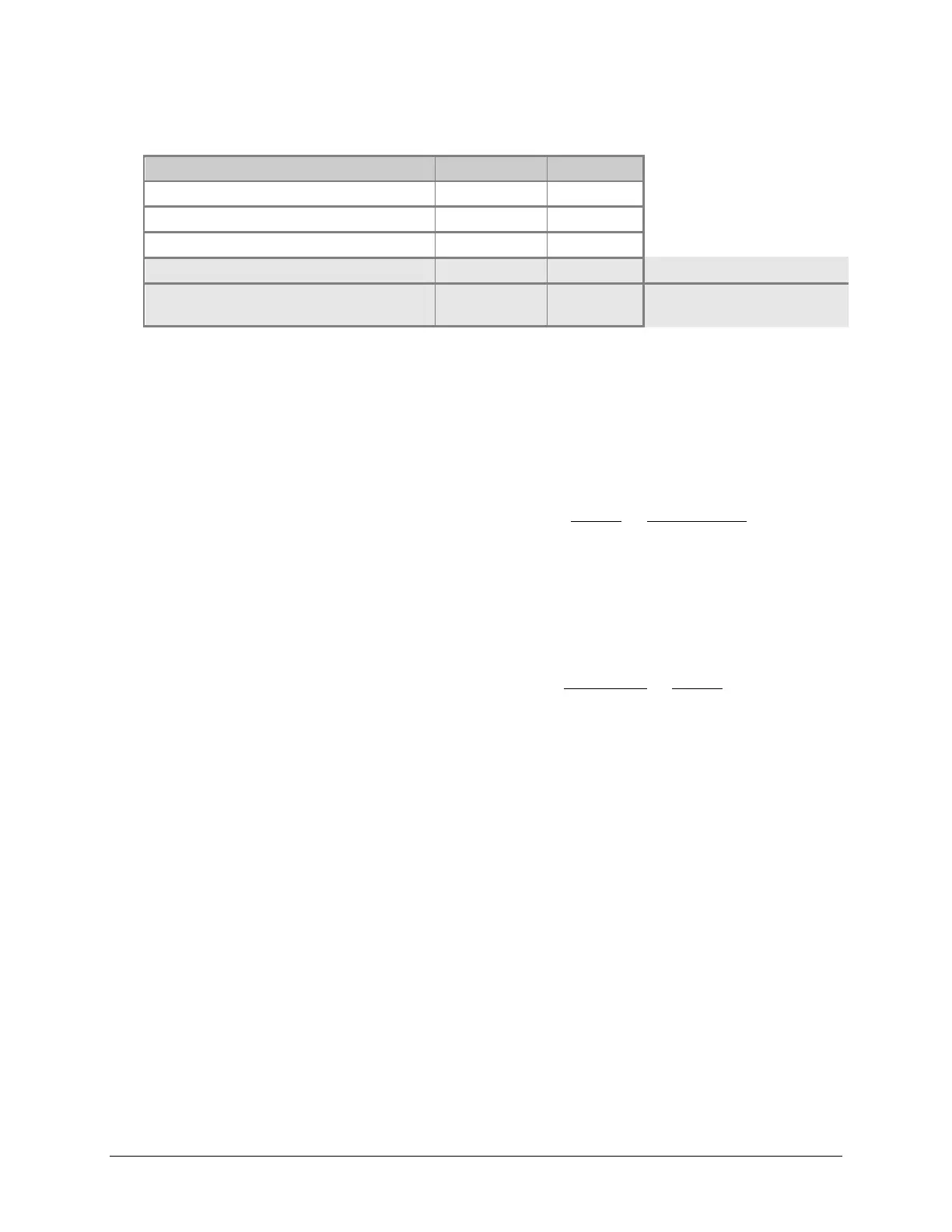Fluorescence Tests | 119
3. Carefully prepare the dilutions. Label each with “SF” and the concentration:
Mix this SF solution: with buffer: to make:
0.53 mL of 1.3288 mM stock solution 13.47 mL 50.2 μM
110 µL of 50.2 μM solution 13.89 mL 400 nM
3.5 mL of 400 nM solution 10.5 mL 100 nM
0.46 mL of 100 nM solution 13.54 mL 3.3 nM Corners Test
4.24 mL of 3.3 nM solution 9.76 mL
1 nM Sensitivity and
Linearity Tests
Procedure
1. Create the Gen5 protocols (see page 122).
2. If you have not already done so, prepare the test solutions (see page 118).
3. Perform the tests using the
Bottom optics:
• Pipette the test solutions into a clean 96-well quartz or glass-bottom microplate
(see the map on page
121).
• Create an experiment based on the
Synergy HTX FI_B.prt protocol and read
the plate.
• When complete, save the experiment using a unique name.
4. Perform the tests using the
Top optics:
• Pipette the test solutions into a new 96-well solid black or quartz microplate
(see the map on page
121).
• Create an experiment based on the
Synergy HTX FI_T.prt protocol and read
the plate.
• When complete, save the experiment using a unique name.
6. Calculate and analyze the results as described below.
Results Analysis
Corners Test
1. Calculate the Mean of the twelve wells containing the 3.3 nM SF test solution
(A1-A3, A10-A12, H1-H3, H10-H12).
2. Calculate the Standard Deviation of the same twelve wells.
3. Calculate the % CV:
(Standard Deviation/Mean) * 100
The % CV must be
less than 3.0 to pass.
Synergy HTX Operator's Manual

